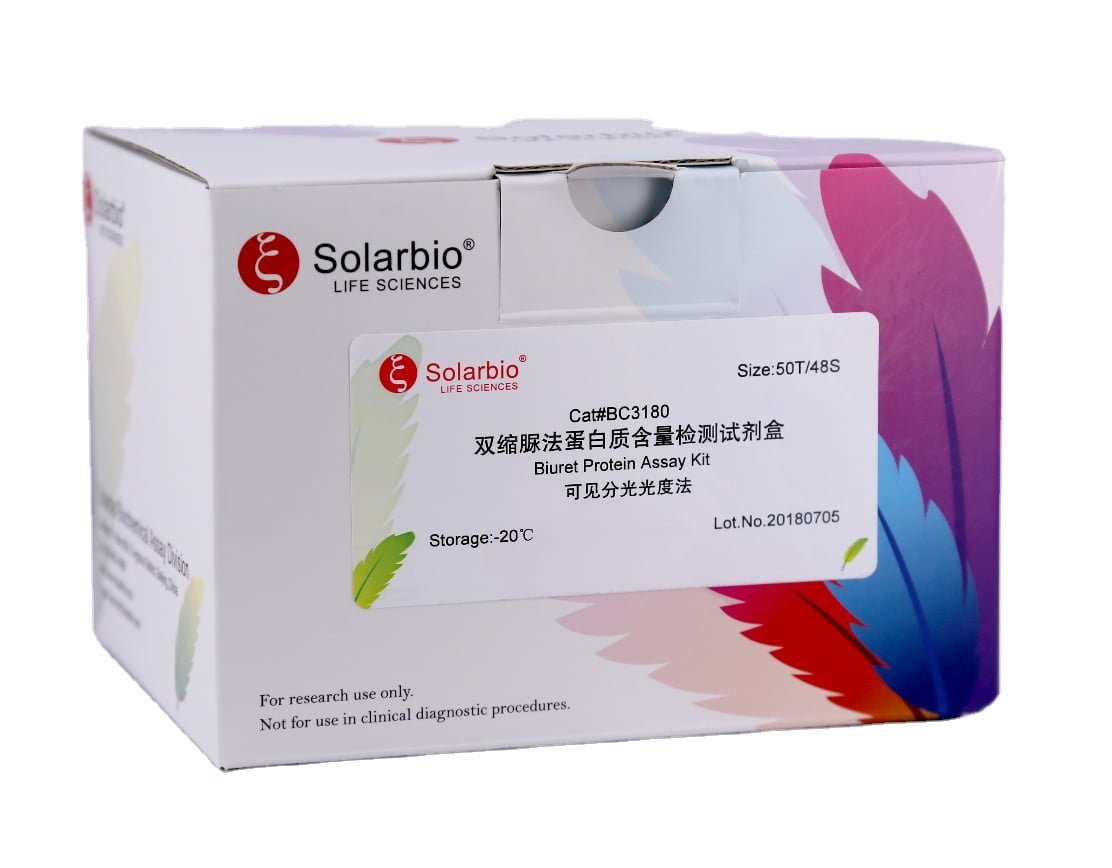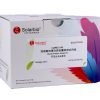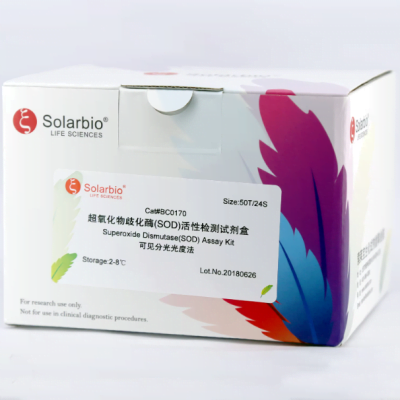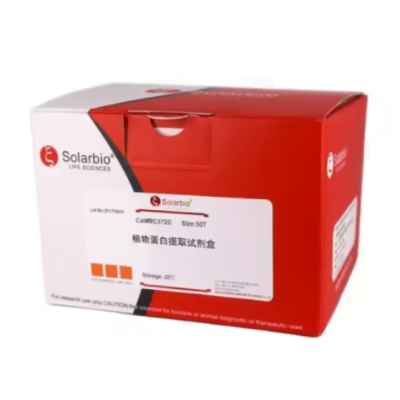Información del producto
Numero de catalogo: BC4980
Especificaciones: 50T/48S
Componentes del kit
- Solución de extracción: 60 mlx 1 botella, almacenar a 2-8 ° C
- reactivo uno: 35 mlx 1 botella, almacenar a 2-8 ° C
- Reactivo dos: Polvo x 2 viales, store at -20°C
- Reactivo tres: Polvo x 2 viales, almacenar a 2-8 ° C
- Reactivo cuatro: 3 mlx 1 botella, almacenar a 2-8 ° C
Preparación de la solución
1. Reactivo II: Agregar 0.25 mL de agua destilada antes de su uso.. Unused reagents should be stored at -20℃ for two weeks.
2. Working solution of Reagent II: According to the amount required for the test, prepare the Working solution according to the ratio of Reagent II (µL): Agua destilada (µL) =1:29, and prepare the reagents when it will be used. The Working solution of Reagent II should be used up on the same day if it is prepared on the same day.
3. Reactivo III: Agregar 1.5 mL de agua destilada antes de su uso.. Mezclar bien. Unused reagents should be stored at -20℃ for two weeks
Descripción del Producto
Formaldehyde dehydrogenase exists in most prokaryotes and all eukaryotes. It is an oxidoreductase that converts formaldehyde. Formaldehyde dehydrogenase can catalyze formaldehyde and NAD+ to produce NADH. The absorbance at 340 nm will increase. By measuring the change at 340nm, the activity of formaldehyde dehydrogenase can be calculated.
Notas:
- It is recommended to select 2-3 samples with expected large differences for pre-experiment before the experiment. If the sample absorbance is not within the measurement range, it is recommended to dilute or increase the sample volume for detection.
Required Instruments and Supplies:
- UV spectrophotometer
- Low-temperature centrifuge
- Constant temperature incubator/water bath
- Pipeta ajustable
- 1 cubeta de cuarzo ml
- Mortar/homogenizer
- Ice and distilled water
Operation Steps:
I. Tratamiento de muestra (the amount of sample to be tested can be adjusted appropriately, and the specific ratio can be referenced)
- Tejido: According to the ratio of animal tissue weight (gramo): volumen de solución de extracción (mililitros) = 1:5~10 (Se recomienda pesar 0.1 g of animal tissue and add 1 mL of extraction solution), homogenize in an ice bath, centrifugar en 8000 gramo, 4°C para 10 minutos; tomar el sobrenadante (if the supernatant is not clear enough, it is recommended to repeat the above centrifugation steps) and place it on ice for testing.
II. Pasos de determinación
- Preheat the UV spectrophotometer for at least 30 minutos, ajustar la longitud de onda a 340 Nuevo Méjico, y cero con agua destilada.
- Preheat Reagent One and Reagent Four at 37°C for 10 minutes before use.
- en un 1 cubeta de cuarzo ml, agregar 100 μl de muestra, 550 μL of Reagent One, 250 μL of Reagent Two working solution, 50 μL of Reagent Three, y 50 μL of Reagent Four in sequence. Mix thoroughly immediately and determine the absorbance A1 at 340 nm para 20 segundos. Place it in a 37°C water bath or incubator for 5 minutes to react, quickly remove it and wipe it dry, and determine the absorbance A2 at 5min20s. Record the absorbance A1 at 340 nm para 20 seconds and the absorbance A2 after 5 minutos. Calculate ΔA = A2 – A1.
III. Calculation of FDH Activity in Animal Tissue
- Calculation based on sample protein concentration:
Definición de unidad: One unit of enzyme activity is defined as the amount of enzyme that catalyzes the production of 1 nmol of NADH per minute per mg of tissue protein.
FDH (nmol/min/mg prot) =ΔA÷ (ε×d) ×VR÷ (VS×Cpr) ×109÷T×F=321.54×ΔA÷Cpr×F
- mi: Coeficiente de extinción molar de NADH, 6220 L/mol/cm
- d: Cuvette light path, 1 cm
- Vtotal: Total reaction system volume, 0.001 l
- Vsample: Sample volume added, 0.1 mililitros
- RCP: Concentración de proteína de muestra, mg/mL
- t: Tiempo de reacción, 5 mín.
- F: Dilution factor
- Calculation based on peso de la muestra:
Definición de unidad: Una unidad de actividad enzimática se define como la cantidad de enzima que cataliza la producción de 1 nmol of NADH per minute per gram of tissue.
FDH enzyme activity (U/g wet weight) = ΔA ÷ (ε × d) × Vtotal × 10⁹ ÷ (Vsample × W ÷ Vtotal) × T × F = 321.54 × ΔA ÷ W × F
where:
- W.: Peso de la muestra, gramo
Notas:
- If the measured absorbance value A > 1.0 or ΔA > 0.5, it is recommended to dilute the sample with extraction solution before re-measurement and multiply the dilution factor in the calculation formula. If the measured absorbance value is low, it is recommended to increase the sample amount before re-measurement.
- Reagent Four is toxic. Please wear masks, guantes, and other protective equipment during the experiment.
Ejemplos experimentales:
- Pesar 0.1 g of mouse heart tissue, agregar 1 mL of extraction solution, homogenize in an ice bath, centrifugar en 8000 gramo, 4°C para 10 minutos; collect the supernatant and place it on ice for testing. Usar un 1 mL quartz cuvette and follow the assay steps to calculate ΔA = A2 – A1 = 0.626 – 0.301 = 0.325. According to the formula, calculate the FDH activity in mouse heart tissue:
FDH enzyme activity (U/g wet weight) = 321.54 × ΔA ÷ W × F = 1045 U/g wet weight
- Pesar 0.1 g of mouse liver tissue, agregar 1 mL of extraction solution, homogenize in an ice bath, centrifugar en 8000 gramo, 4°C para 10 minutos; dilute the supernatant 10-fold, and place it on ice for testing. Usar un 1 mL quartz cuvette and follow the assay steps to calculate ΔA = A2 – A1 = 0.224 – 0.136 = 0.088. According to the formula, calculate the FDH activity in mouse liver tissue:
FDH enzyme activity (U/g wet weight) = 321.54 × ΔA ÷ W × F = 2829.6 U/g wet weight
Related Series Products:
- BC4970/BC4975 Plant Tissue Formaldehyde Dehydrogenase (FDH) Kit de ensayo de actividad
- BC4990/BC4995 Formaldehyde Dehydrogenase (FDH) Activity Assay Kit for Cells, Bacteria and Other Liquid Samples





-scaled-400x400.jpg)
Reseñas
Aún no hay reseñas.